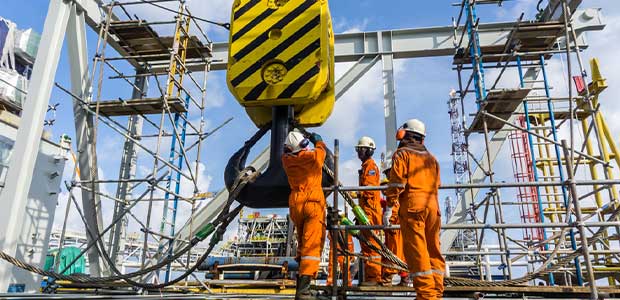
Keeping Workers Safe from Crane Hazards
Incidents involving cranes led to over 400 nonfatal injuries in 2020.
- By Alex Saurman
- Jan 09, 2023
Cranes are useful machinery essential in many projects. However, their use also brings hazards.
In 2020, there were 490 cases of non-fatal incidents involving cranes that caused workers to miss work, according to the Bureau of Labor Statistics (BLS). From 2011 to 2017, an average of 42 workers died from crane-related deaths each year, per the BLS. The most frequent incident involving cranes that led to worker death during this time period was struck by incidents. Falls to a lower level and transportation-related incidents accounted for fewer deaths, but still lead to workers losing their lives.
In November 2022, an incident led to a crane-related death in Guam, according to a news release. Following the incident, OSHA advised “employers in Guam, American Samoa and the Northern Mariana Islands to enhance safety measures to protect workers against crane hazards,” the news release said.
So how can employers—everywhere—protect workers from injury or death around cranes? For starters, “use your experience, knowledge and training to assess risks and follow crane procedures,” OSHA said. If you notice any damage, don’t use the machinery. If you think there may be an issue, like a “mechanical or electrical malfunction,” don’t use the machinery.
Suspended loads can bring their own hazards into the workspace. To avoid any injuries, workers should not work on the load if it means they must be under it or walk under the load, OSHA said.
When it comes to the wire rope, there are a few additional “don’ts” OSHA recommends:
- “Do not attempt to lengthen wire rope or repair damaged wire rope,”
- “Do not use the wire rope, any part of the crane, hoist, or the load block and hook as a ground for welding” and
- “Do not allow a welding electrode to touch the wire rope.”
Any labels on the machinery should not be tampered with. Employers should also ensure that workers are using PPE, OSHA said.
"Injuries and fatalities related to crane operations are preventable with adequate workplace training and proper attention to safety controls," said OSHA Area Director Roger Forstner in Honolulu in the news release. "Employers need to take all necessary steps to reduce incidents involving crane operations and improve the workplace safety where cranes are in use."
About the Author
Alex Saurman is a former Content Editor for Occupational Health & Safety,who has since joined OH&S’s client services team. She continues to work closely with OH&S’s editorial team and contributes to the magazine.